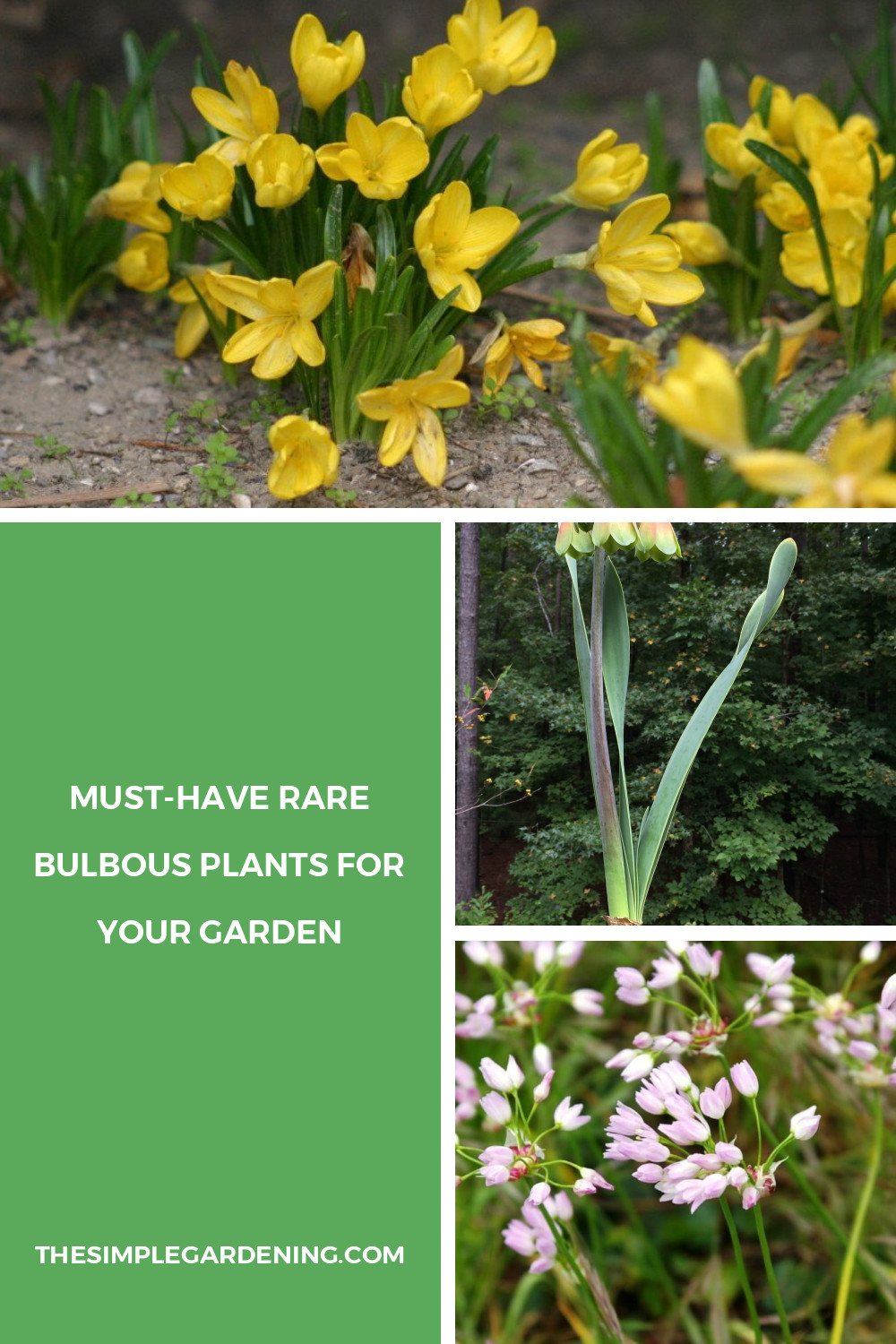Rare bulbous plants are the hidden gems of the gardening world. These unique specimens, with their stunning blooms and fascinating growth habits, offer an exciting challenge for passionate gardeners. In this article, we’ll dive into the world of rare bulbous plants, exploring their characteristics, selection, planting techniques, and care. Whether you’re an experienced horticulturist or a gardening enthusiast, these tips and insights will help you cultivate a beautiful and rare bulb collection.
Definition and Characteristics of Bulbous Plants
Bulbous plants are defined by their underground storage organs, which include true bulbs, corms, tubers, and rhizomes. These structures store nutrients and energy, enabling the plants to survive adverse conditions and regenerate each year.
Table: Types of Bulbous Plants
| Type | Description | Examples |
|---|---|---|
| True Bulbs | Fleshy storage organ with layered scales. | Tulips, Daffodils |
| Corms | Swollen stem base, usually covered with a tunic. | Crocus, Gladiolus |
| Tubers | Thickened underground stems or roots. | Potatoes, Dahlias |
| Rhizomes | Horizontal underground stems with nodes. | Iris, Cannas |
Importance of Preserving Rare Species
Preserving rare bulbous plants is vital for biodiversity and horticultural heritage. Many of these plants face threats from habitat loss, climate change, and over-collection in the wild. By cultivating and sharing these plants, gardeners can help protect these treasures for future generations.
Point List: Reasons for Preservation
- Maintains biodiversity
- Protects plant heritage
- Supports ecological balance
- Provides research opportunities
- Ensures availability for future generations
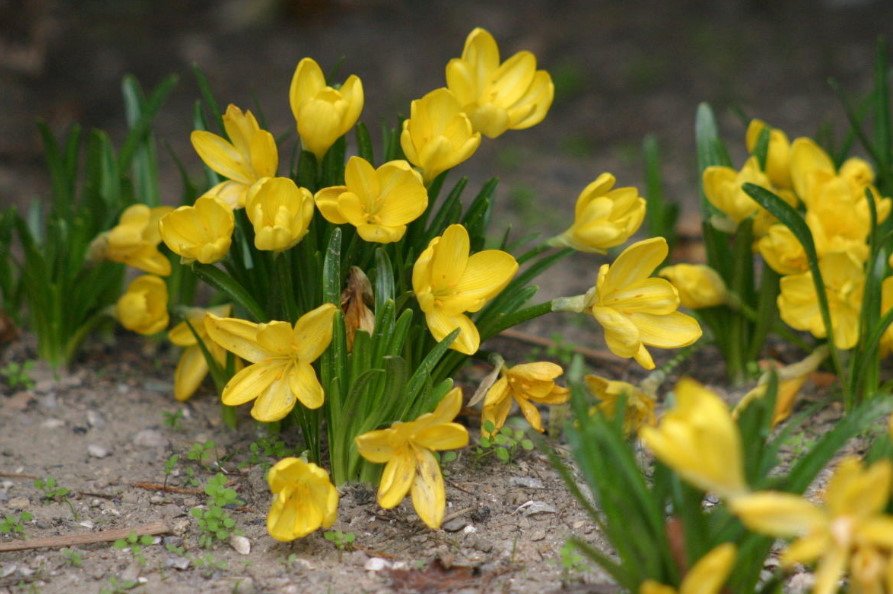
Source Image: bestlandscapeideas.com
Overview of Popular Rare Bulbous Plants
Rare bulbous plants come in various shapes, sizes, and colors, each with its own unique charm. Here are some of the most popular rare bulbous plants that you might consider for your garden.
Table: Examples of Popular Rare Bulbous Plants
| Plant Name | Description | Flower Color | Bloom Time |
|---|---|---|---|
| Fritillaria imperialis | Tall plant with striking, bell-shaped flowers. | Orange, Yellow, Red | Spring |
| Gloriosa superba | Climbing plant with exotic, flame-like flowers. | Red, Yellow | Summer |
| Calochortus spp. | Delicate, tulip-like flowers with unique patterns. | Various | Spring |
| Erythronium spp. | Nodding flowers with reflexed petals. | White, Yellow, Pink | Spring |
| Sternbergia lutea | Daffodil-like flowers that bloom in autumn. | Yellow | Fall |
Selecting Rare Bulbous Plants
Choosing the right rare bulbous plants involves considering several factors, from climate compatibility to sourcing genuine species. Here’s how to make informed decisions.
Factors to Consider
When selecting rare bulbous plants, consider your local climate, soil type, and the specific needs of the plants. Some bulbs thrive in sandy soils, while others prefer clay.
Table: Factors to Consider When Selecting Bulbous Plants
| Factor | Considerations |
|---|---|
| Climate | Frost tolerance, heat tolerance, humidity levels |
| Soil Type | Drainage, pH levels, organic content |
| Sunlight | Full sun, partial shade, full shade |
| Water Needs | Drought tolerance, moisture requirements |
| Growth Habit | Height, spread, growth rate |
Sourcing Rare Bulbs
Finding rare bulbs can be challenging. Reliable sources include specialty nurseries, botanical gardens, and seed exchanges. Ensure you’re getting genuine species by researching suppliers and asking for provenance.
Point List: Reliable Sources for Rare Bulbs
- Specialty nurseries
- Botanical gardens
- Seed exchanges
- Plant societies
- Online rare plant shops
Identifying Genuine Rare Species
Be cautious of imposters when buying rare bulbs. Look for reputable sellers, request certificates of authenticity, and compare the plant’s characteristics with trusted references.
Table: Tips for Identifying Genuine Rare Species
| Tip | Description |
|---|---|
| Reputable Sellers | Purchase from well-known and trusted suppliers. |
| Certificates of Authenticity | Ask for documentation confirming the plant’s origins. |
| Visual Identification | Compare with images and descriptions from reliable sources. |
| Expert Consultation | Seek advice from botanists or experienced gardeners. |
| Plant Societies | Join plant societies that focus on rare bulbous plants. |

Source Image: flavored.ph
Preparing the Soil
The foundation for healthy bulbous plants is well-prepared soil. Understanding soil composition, pH levels, and drainage solutions is crucial for successful cultivation.
Soil Composition and Amendments
Bulbous plants often prefer well-draining soil with a mix of organic matter. Amend your soil with compost, peat, or sand to improve texture and fertility.
Table: Recommended Soil Amendments for Bulbous Plants
| Amendment | Benefits | Application Rate |
|---|---|---|
| Compost | Increases organic content and fertility | 2-4 inches mixed in |
| Peat Moss | Improves moisture retention | 1-2 inches mixed in |
| Sand | Enhances drainage | 1-2 inches mixed in |
| Perlite | Aerates soil and improves drainage | 1-2 inches mixed in |
| Lime | Adjusts pH levels | Based on soil test results |
pH Levels and Their Importance
The pH level of your soil affects nutrient availability and plant health. Most bulbous plants thrive in slightly acidic to neutral pH (6.0-7.0).
Point List: Importance of pH Levels
- Affects nutrient availability
- Influences microbial activity
- Impacts plant growth and health
- Determines amendment needs
- Guides fertilizer choice
Drainage Solutions for Bulbous Plants
Proper drainage is essential to prevent bulb rot. Consider raised beds, mounded planting areas, or adding drainage materials to improve soil conditions.
Table: Drainage Solutions for Bulbous Plants
| Solution | Description | Application |
|---|---|---|
| Raised Beds | Elevates soil level for better drainage | Construct 6-12 inches high |
| Mounded Planting | Creates elevated rows or mounds | Form 6-8 inch mounds |
| Gravel Layer | Adds a layer of gravel at the planting site | 2-4 inches at the base |
| Perlite/Sand Mix | Incorporates perlite or sand into soil | 1-2 inches mixed in |
| Drainage Holes | Ensures pots and containers have drainage | Drill holes as needed |
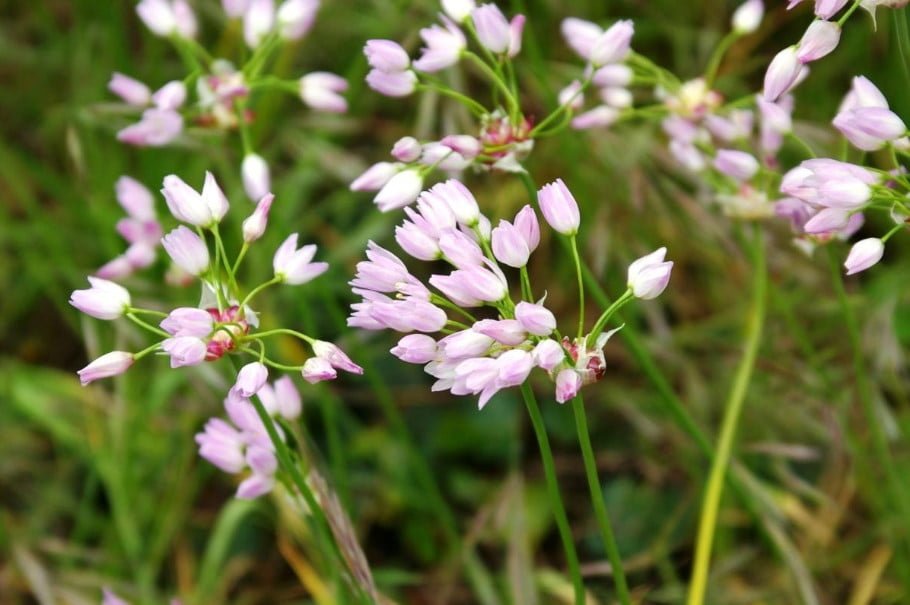
Source Image: bestlandscapeideas.com
Planting Techniques
Proper planting techniques are key to ensuring the health and longevity of your bulbous plants. From planting depths to seasonal guidelines, here’s what you need to know.
Optimal Planting Depths for Various Bulbs
Planting depth is critical for bulbous plants. Too deep or too shallow planting can affect growth and flowering. Generally, plant bulbs at a depth of two to three times their height.
Table: Optimal Planting Depths for Common Bulbs
| Bulb Type | Planting Depth (inches) | Spacing (inches) |
|---|---|---|
| Tulips | 6-8 | 4-6 |
| Daffodils | 6-8 | 6-8 |
| Crocus | 2-3 | 2-3 |
| Gladiolus | 4-6 | 6-8 |
| Lilies | 6-8 | 8-12 |
Spacing and Grouping Recommendations
Proper spacing allows for adequate air circulation and reduces competition for nutrients. Group bulbs in odd numbers for a natural look.
Point List: Spacing and Grouping Tips
- Ensure adequate air circulation
- Reduce competition for nutrients
- Group in odd numbers (3, 5, 7)
- Consider mature size
- Allow room for offsets
Seasonal Planting Guidelines
Plant bulbs in the appropriate season to align with their natural growth cycles. Most bulbs are planted in the fall for spring blooming, but some are planted in spring for summer blooms.
Table: Seasonal Planting Guidelines
| Season | Bulbs to Plant | Notes |
|---|---|---|
| Fall | Tulips, Daffodils, Crocus, Hyacinths | Plant before first frost |
| Spring | Gladiolus, Dahlias, Lilies | Plant after last frost |
| Summer | Autumn Crocus, Sternbergia | Plant in late summer |
| Winter | Forced bulbs (Amaryllis, Paperwhites) | Plant indoors |
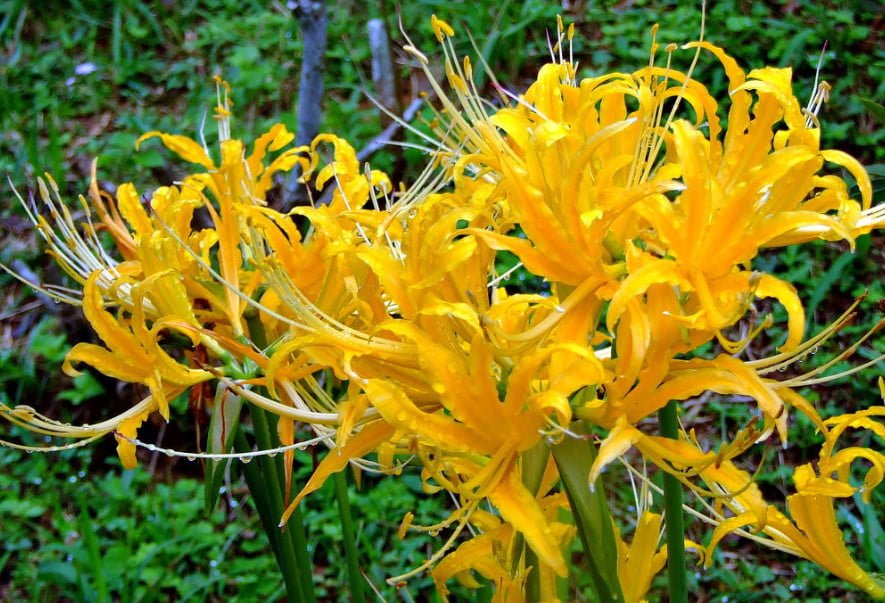
Source Image: bestlandscapeideas.com
Rare Bulbous Plants
Watering and Irrigation
Watering practices are crucial for the health of bulbous plants. Different species have varying water needs, and proper irrigation techniques can prevent common issues like root rot.
Watering Schedules for Different Species
Understanding the specific water needs of your bulbous plants is essential. Overwatering can lead to root rot, while underwatering can stress the plants.
Table: Watering Schedules for Common Bulbous Plants
| Bulb Type | Watering Schedule | Notes |
|---|---|---|
| Tulips | Moderate, reduce after flowering | Avoid waterlogging |
| Daffodils | Regular, reduce in dormancy | Keep soil slightly moist |
| Crocus | Light, increase during active growth | Good drainage is essential |
| Gladiolus | Regular, more during flowering | Mulch to retain moisture |
| Lilies | Consistent, avoid drying out | Mulch to conserve water |
Drip Irrigation vs. Overhead Watering
Drip irrigation provides a controlled, efficient way to water bulbous plants without wetting the foliage, reducing the risk of fungal diseases.
Point List: Drip Irrigation Benefits
- Reduces water waste
- Prevents foliage wetting
- Delivers water directly to roots
- Minimizes weed growth
- Reduces risk of fungal diseases
Preventing Overwatering and Root Rot
Overwatering is a common issue that leads to root rot in bulbous plants. Ensure well-draining soil, use mulch to retain moisture, and avoid watering during dormancy.
Table: Tips for Preventing Overwatering and Root Rot
| Tip | Description |
|---|---|
| Well-Draining Soil | Use soil amendments to improve drainage |
| Mulching | Retains moisture without over-saturating soil |
| Watering Timing | Water in the morning to allow drying |
| Dormancy Care | Reduce or stop watering during dormancy |
| Proper Planting | Avoid planting bulbs too deeply |

Source Image: bestlandscapeideas.com
Fertilizing and Nutrient Management
Fertilizing bulbous plants ensures they receive the essential nutrients needed for vigorous growth and blooming. Understanding nutrient requirements and application timing is key.
Essential Nutrients for Bulbous Plants
Bulbous plants require a balanced supply of macronutrients (NPK) and micronutrients for healthy growth.
Table: Essential Nutrients for Bulbous Plants
| Nutrient | Role in Plant Growth | Sources |
|---|---|---|
| Nitrogen (N) | Promotes leaf and stem growth | Compost, blood meal |
| Phosphorus (P) | Supports root development and flowering | Bone meal, rock phosphate |
| Potassium (K) | Enhances overall health and disease resistance | Wood ash, potash |
| Calcium (Ca) | Strengthens cell walls | Lime, gypsum |
| Magnesium (Mg) | Essential for chlorophyll production | Epsom salts |
Organic vs. Synthetic Fertilizers
Both organic and synthetic fertilizers have their advantages. Organic options improve soil health, while synthetic fertilizers offer quick nutrient availability.
Point List: Organic Fertilizer Benefits
- Improves soil structure
- Enhances microbial activity
- Slow-release nutrients
- Reduces environmental impact
- Sustainable sourcing
Timing and Frequency of Fertilizer Application
Applying fertilizer at the right time ensures optimal growth and blooming. Most bulbous plants benefit from fertilization in early spring and after blooming.
Table: Fertilizer Application Timing
| Bulb Type | Initial Application (Spring) | Follow-Up (Post-Bloom) |
|---|---|---|
| Tulips | Early spring, when shoots appear | After blooming, before dormancy |
| Daffodils | Early spring, at leaf emergence | After blooming, light feeding |
| Crocus | Early spring, as growth starts | After blooming, if needed |
| Gladiolus | At planting time | Mid-season, during flowering |
| Lilies | Early spring, at emergence | After blooming, light feeding |
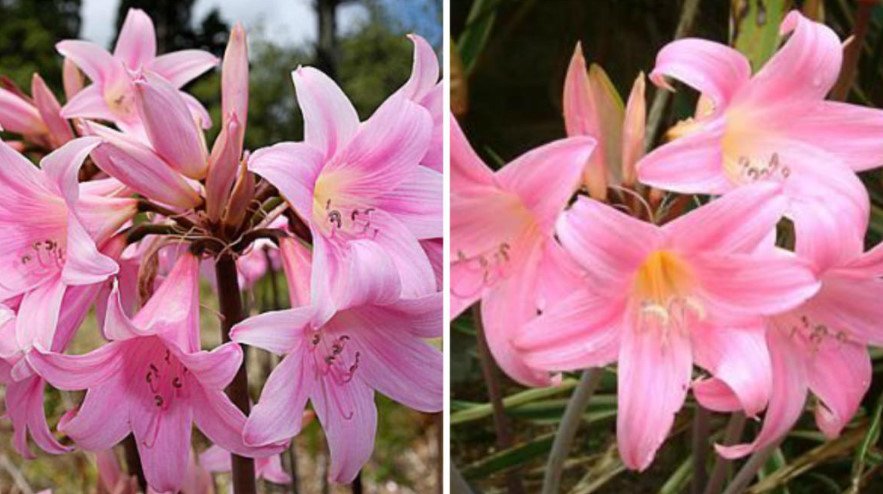
Source Image: bestlandscapeideas.com
Light Requirements
Light is a crucial factor in the successful cultivation of bulbous plants. Understanding their sunlight needs and adjusting exposure can make a significant difference in their growth and blooming.
Understanding Sunlight Needs
Most bulbous plants thrive in full sun to partial shade. However, the specific light requirements can vary based on the species.
Table: Light Requirements for Common Bulbous Plants
| Bulb Type | Light Requirement | Notes |
|---|---|---|
| Tulips | Full sun | At least 6 hours of direct sun |
| Daffodils | Full sun to partial shade | Prefers morning sun |
| Crocus | Full sun | Requires well-drained soil |
| Gladiolus | Full sun | Needs protection from wind |
| Lilies | Full sun to partial shade | Morning sun, afternoon shade |
Adjusting Light Exposure for Indoor Cultivation
Indoor cultivation of bulbous plants requires careful light management. Use grow lights to supplement natural light and ensure even exposure.
Point List: Indoor Light Management Tips
- Use full-spectrum grow lights
- Place bulbs near south-facing windows
- Rotate plants for even light exposure
- Adjust light intensity as needed
- Mimic natural light cycles
Using Grow Lights for Rare Bulbs
Grow lights can provide the necessary light spectrum for photosynthesis, promoting healthy growth and blooming of indoor bulbous plants.
Table: Types of Grow Lights for Bulbous Plants
| Light Type | Description | Best Use |
|---|---|---|
| LED Grow Lights | Energy-efficient, full-spectrum light | General indoor cultivation |
| Fluorescent Lights | Broad spectrum, lower heat output | Seed starting, small setups |
| HID Lights | High intensity, good for large areas | Large indoor gardens |
| Incandescent Lights | Low cost, limited spectrum | Supplemental lighting only |
| Halogen Lights | Bright light, high heat output | Large areas, high ceilings |
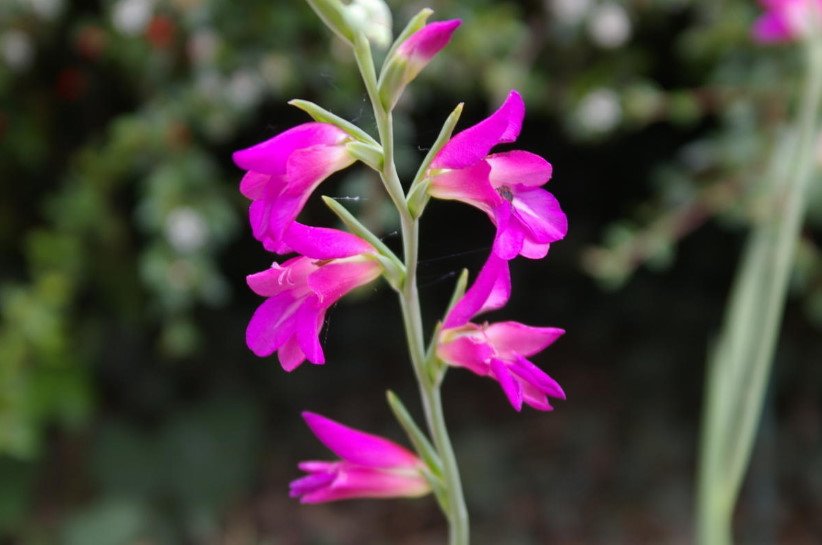
Source Image: bestlandscapeideas.com
Rare Bulbous Plants
Temperature and Humidity Control
Maintaining optimal temperature and humidity levels is essential for the healthy growth of bulbous plants. Different species have varying requirements that must be managed carefully.
Ideal Temperature Ranges for Growth
Each bulbous plant species has a preferred temperature range for growth. Maintaining these temperatures can help ensure healthy development and flowering.
Table: Ideal Temperature Ranges for Common Bulbous Plants
| Bulb Type | Preferred Temperature Range (°F) | Notes |
|---|---|---|
| Tulips | 35-60 (winter dormancy), 60-70 (spring growth) | Chilling period required |
| Daffodils | 35-60 (winter dormancy), 60-70 (spring growth) | Chilling period required |
| Crocus | 35-60 (winter dormancy), 60-70 (spring growth) | Chilling period required |
| Gladiolus | 60-70 (growth), 50-60 (dormancy) | Protect from frost |
| Lilies | 40-60 (winter dormancy), 60-70 (spring growth) | Chilling period required |
Humidity Levels and Their Effects
Humidity levels can significantly impact the health of bulbous plants. While most prefer moderate humidity, some species may require specific adjustments.
Point List: Humidity Management Tips
- Use humidifiers for dry indoor environments
- Ensure good air circulation
- Avoid high humidity to prevent fungal diseases
- Use mulch to retain soil moisture
- Monitor humidity with hygrometers
Strategies for Climate Control in Greenhouses
Greenhouses provide a controlled environment for growing rare bulbous plants. Implementing effective climate control strategies can optimize growth conditions.
Table: Climate Control Strategies for Greenhouses
| Strategy | Description |
|---|---|
| Heating Systems | Maintain optimal temperatures during cold periods |
| Ventilation | Ensure good air circulation to prevent diseases |
| Humidity Control | Use humidifiers or dehumidifiers as needed |
| Shading | Provide shade cloth to reduce excessive sunlight |
| Automated Controls | Use sensors and automated systems for precision |

Source Image: www.pinterest.ca
Pest and Disease Management
Managing pests and diseases is critical to maintaining the health of bulbous plants. Early identification and appropriate treatment can prevent significant damage.
Common Pests Affecting Bulbous Plants
Various pests can target bulbous plants, including aphids, slugs, and bulb mites. Knowing the common pests and their signs can help you take prompt action.
Table: Common Pests and Their Signs
| Pest | Signs of Infestation | Control Methods |
|---|---|---|
| Aphids | Sticky residue, distorted leaves | Insecticidal soap, neem oil |
| Slugs and Snails | Chewed leaves, slime trails | Handpicking, iron phosphate baits |
| Bulb Mites | Stunted growth, discolored bulbs | Predatory mites, insecticidal soap |
| Thrips | Silvery streaks, deformed flowers | Neem oil, blue sticky traps |
| Rodents | Chewed bulbs, missing plants | Wire mesh, repellents |
Organic and Chemical Pest Control Methods
Both organic and chemical methods can effectively control pests. Organic methods are more environmentally friendly, while chemical methods can provide quick results.
Point List: Organic Pest Control Methods
- Insecticidal soap
- Neem oil
- Diatomaceous earth
- Predatory insects
- Companion planting
Point List: Chemical Pest Control Methods
- Systemic insecticides
- Contact insecticides
- Rodent repellents
- Fungicides
- Miticides
Recognizing and Treating Plant Diseases
Diseases like bulb rot, fungal infections, and viruses can affect bulbous plants. Early detection and treatment are crucial to prevent spread.
Table: Common Plant Diseases and Treatments
| Disease | Symptoms | Treatment |
|---|---|---|
| Bulb Rot | Soft, mushy bulbs, foul odor | Improve drainage, fungicides |
| Powdery Mildew | White, powdery coating on leaves | Neem oil, sulfur sprays |
| Botrytis Blight | Gray mold on flowers and leaves | Pruning affected areas, fungicides |
| Mosaic Virus | Yellow streaks or mottling on leaves | Remove infected plants, control aphids |
| Rust | Orange pustules on leaves | Fungicides, remove infected foliage |
Propagation Techniques
Propagating rare bulbous plants can expand your collection and help preserve these unique species. Different methods like division, seed propagation, and tissue culture are effective for various plants.
Division and Offsets
Division is one of the most straightforward methods of propagating bulbous plants. This method involves separating offsets or bulblets from the parent plant.
Table: Steps for Propagating by Division
| Step | Description |
|---|---|
| Step 1 | Dig up the parent plant carefully |
| Step 2 | Gently separate offsets or bulblets |
| Step 3 | Ensure each division has roots and a growing point |
| Step 4 | Replant divisions at the appropriate depth |
| Step 5 | Water thoroughly and provide regular care |
Seed Propagation Methods
Propagating bulbs from seeds can be rewarding, though it requires patience as it takes longer to reach maturity.
Point List: Seed Propagation Tips
- Collect seeds from mature plants
- Sow seeds in well-draining soil mix
- Maintain consistent moisture
- Provide appropriate light conditions
- Be patient, germination may take months
Tissue Culture for Rare Species
Tissue culture is a more advanced method used to propagate rare and valuable species, producing multiple plants from a small tissue sample.
Table: Steps for Tissue Culture Propagation
| Step | Description |
|---|---|
| Step 1 | Sterilize plant tissue sample |
| Step 2 | Place sample in a sterile nutrient medium |
| Step 3 | Incubate under controlled conditions |
| Step 4 | Transfer growing plantlets to soil or potting mix |
| Step 5 | Acclimate to normal growing conditions gradually |
Seasonal Care and Maintenance
Bulbous plants require specific care throughout the year to thrive. Understanding how to prepare for dormancy, prune, and protect them during winter is essential.
Preparing for Dormancy Periods
Most bulbous plants enter a dormancy period after blooming. Proper care during this time ensures they return strong in the next growing season.
Table: Dormancy Preparation Tips
| Task | Description |
|---|---|
| Reduce Watering | Gradually reduce watering as foliage dies back |
| Remove Dead Foliage | Cut back dead leaves and stems |
| Mulch | Apply a layer of mulch to protect bulbs |
| Store Bulbs | Dig up and store tender bulbs in a cool, dry place |
| Monitor | Check stored bulbs periodically for rot or pests |
Seasonal Pruning and Deadheading
Regular pruning and deadheading encourage healthy growth and more blooms. Remove spent flowers to direct energy back to the bulb.
Point List: Pruning and Deadheading Tips
- Remove spent flowers promptly
- Cut back dead or diseased foliage
- Trim to maintain desired plant shape
- Use clean, sharp tools
- Dispose of pruned material to prevent disease spread
Winter Protection Strategies
Protecting bulbous plants from winter weather is crucial, especially for tender species that can’t tolerate frost.
Table: Winter Protection Methods
| Method | Description |
|---|---|
| Mulching | Apply a thick layer of mulch to insulate soil |
| Row Covers | Use row covers to shield plants from frost |
| Container Gardening | Move potted plants indoors or to a sheltered area |
| Cold Frames | Use cold frames to protect outdoor bulbs |
| Anti-Freeze Sprays | Apply anti-freeze solutions to foliage |
Container Gardening for Rare Bulbs
Growing rare bulbous plants in containers allows for better control of soil conditions and mobility, making it easier to protect them from adverse weather.
Choosing the Right Containers
Selecting the right container is essential for healthy growth. Ensure it has adequate drainage and is the right size for the plant.
Table: Ideal Containers for Bulbous Plants
| Container Type | Benefits | Considerations |
|---|---|---|
| Clay Pots | Porous, good drainage | Can dry out quickly |
| Plastic Pots | Lightweight, retains moisture | Ensure proper drainage holes |
| Wooden Planters | Aesthetic appeal, good insulation | Requires lining to prevent rot |
| Fabric Pots | Excellent drainage, air pruning of roots | May need more frequent watering |
| Ceramic Pots | Decorative, good insulation | Heavy, can be expensive |
Soil Mixes for Potted Bulbous Plants
A well-draining soil mix is vital for container-grown bulbs. Combine potting soil with perlite, sand, or compost for optimal results.
Point List: Soil Mix Ingredients
- High-quality potting soil
- Perlite for drainage
- Sand for improved texture
- Compost for nutrients
- Peat moss for moisture retention
Care Tips for Container-Grown Bulbs
Caring for bulbs in containers involves regular watering, feeding, and repositioning to ensure they get the right amount of light.
Table: Care Tips for Container-Grown Bulbs
| Task | Description |
|---|---|
| Watering | Keep soil consistently moist, but not waterlogged |
| Feeding | Fertilize regularly during the growing season |
| Positioning | Move containers to follow the sun as needed |
| Pest Control | Monitor for pests and treat promptly |
| Repotting | Refresh soil and repot every 1-2 years |
Landscape Design with Rare Bulbous Plants
Integrating rare bulbous plants into your garden design can create stunning focal points and enhance the overall aesthetic.
Integrating Rare Bulbs into Garden Design
Plan your garden layout to showcase the unique beauty of rare bulbous plants. Consider their bloom times and growth habits.
Point List: Garden Design Tips
- Group bulbs for visual impact
- Use as focal points in borders or beds
- Mix with perennials for extended bloom
- Consider color combinations
- Ensure complementary heights and textures
Companion Planting Ideas
Companion planting can improve growth conditions and deter pests. Pair bulbous plants with compatible companions for a thriving garden.
Table: Companion Plants for Bulbous Plants
| Bulb Type | Companion Plants | Benefits |
|---|---|---|
| Tulips | Alyssum, Pansies, Ornamental grasses | Adds color, attracts pollinators |
| Daffodils | Hosta, Daylilies, Ferns | Provides shade, deters pests |
| Crocus | Groundcovers like creeping thyme | Reduces weeds, conserves moisture |
| Gladiolus | Marigolds, Zinnias, Petunias | Adds color, repels pests |
| Lilies | Astilbe, Coral Bells, Hosta | Adds texture, provides shade |
Creating Stunning Focal Points
Use rare bulbous plants to create eye-catching focal points in your garden. Their unique forms and vibrant colors draw attention and add interest.
Point List: Focal Point Design Tips
- Plant in prominent locations
- Use contrasting colors and textures
- Group in odd numbers for natural look
- Combine with decorative elements like rocks or statues
- Plan for sequential blooming to maintain interest
Conservation and Ethical Considerations
Cultivating rare bulbous plants comes with a responsibility to practice ethical sourcing and support conservation efforts.
Importance of Conserving Rare Bulbs
Conserving rare bulbs ensures their survival and availability for future generations. It also helps maintain biodiversity and ecosystem health.
Table: Conservation Benefits
| Benefit | Description |
|---|---|
| Biodiversity | Preserves genetic diversity and ecosystem balance |
| Cultural Heritage | Protects horticultural and historical legacy |
| Research | Provides material for scientific studies |
| Future Generations | Ensures availability for future gardeners |
| Ecological Health | Maintains resilient ecosystems |
Ethical Sourcing and Cultivation Practices
Ethical practices in sourcing and cultivating rare bulbs help prevent the depletion of wild populations and promote sustainable gardening.
Point List: Ethical Sourcing Tips
- Buy from reputable nurseries
- Avoid wild collection
- Support conservation organizations
- Share knowledge and resources
- Participate in seed exchanges
Supporting Conservation Efforts
Engage in conservation efforts by donating to organizations, participating in plant rescues, and raising awareness about the importance of rare bulbous plants.
Table: Ways to Support Conservation
| Method | Description |
|---|---|
| Donations | Contribute to conservation organizations |
| Plant Rescues | Participate in organized plant rescue efforts |
| Awareness Campaigns | Raise awareness through social media and events |
| Volunteering | Volunteer for conservation projects |
| Education | Teach others about the importance of conservation |
Showcasing and Sharing Your Collection
Sharing your collection of rare bulbous plants with others can inspire interest and promote conservation efforts.
Photographing Rare Bulbous Plants
Capture the beauty of your plants with photography. Good lighting, composition, and timing are key to stunning photos.
Table: Photography Tips
| Tip | Description |
|---|---|
| Lighting | Use natural light, avoid harsh shadows |
| Composition | Focus on symmetry and balance |
| Background | Keep the background simple to highlight the plant |
| Timing | Photograph during peak bloom |
| Equipment | Use a quality camera or smartphone with good resolution |
Participating in Plant Shows and Competitions
Showcasing your rare bulbs at plant shows and competitions can be a rewarding way to share your passion and gain recognition.
Point List: Show Participation Tips
- Choose the best specimens
- Follow show guidelines
- Prepare plants meticulously
- Label plants accurately
- Network with other enthusiasts
Connecting with Other Rare Plant Enthusiasts
Join clubs, forums, and social media groups to connect with others who share your interest in rare bulbous plants. Exchange tips, seeds, and experiences.
Table: Ways to Connect with Enthusiasts
| Method | Description |
|---|---|
| Gardening Clubs | Join local or national gardening clubs |
| Online Forums | Participate in online gardening forums |
| Social Media | Follow and engage with plant groups on social media |
| Plant Exchanges | Join seed and plant exchange networks |
| Events and Workshops | Attend gardening events and workshops |

